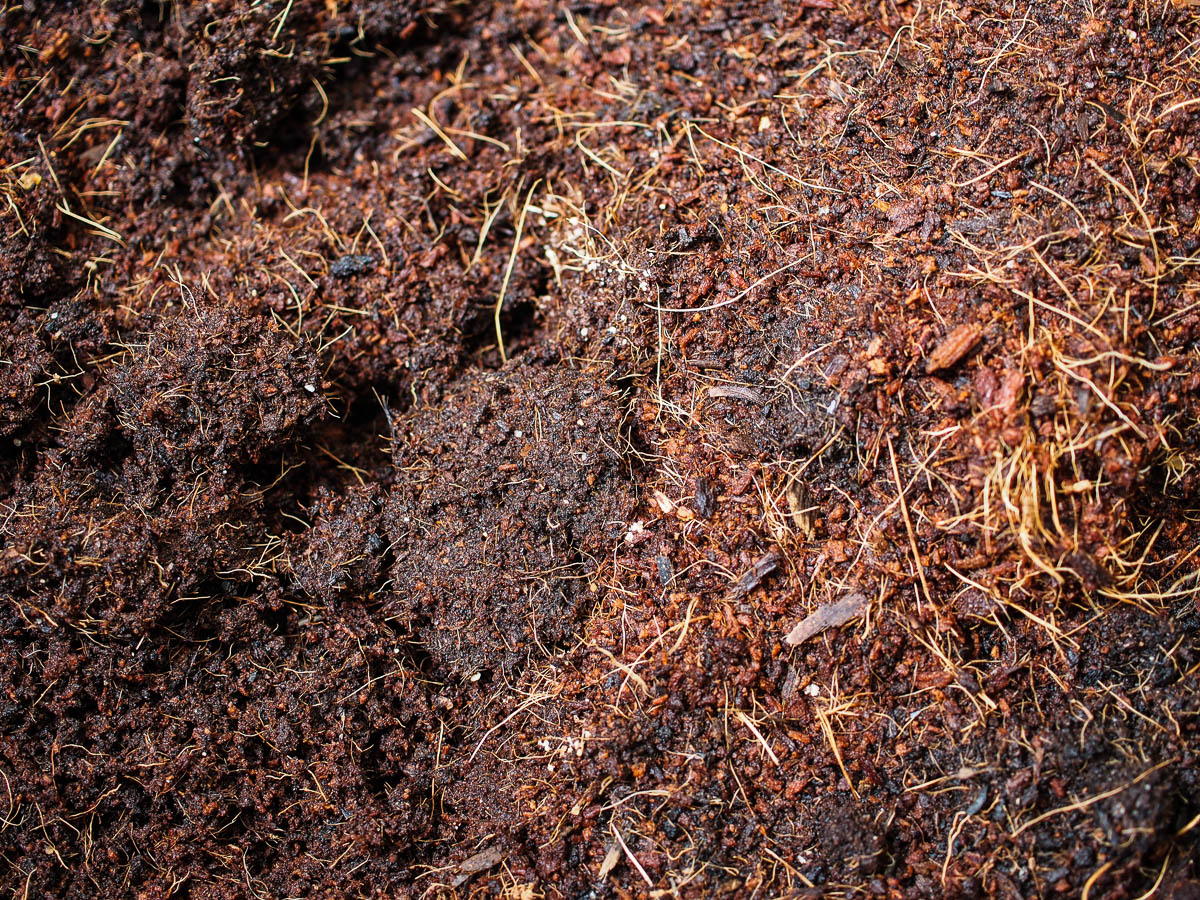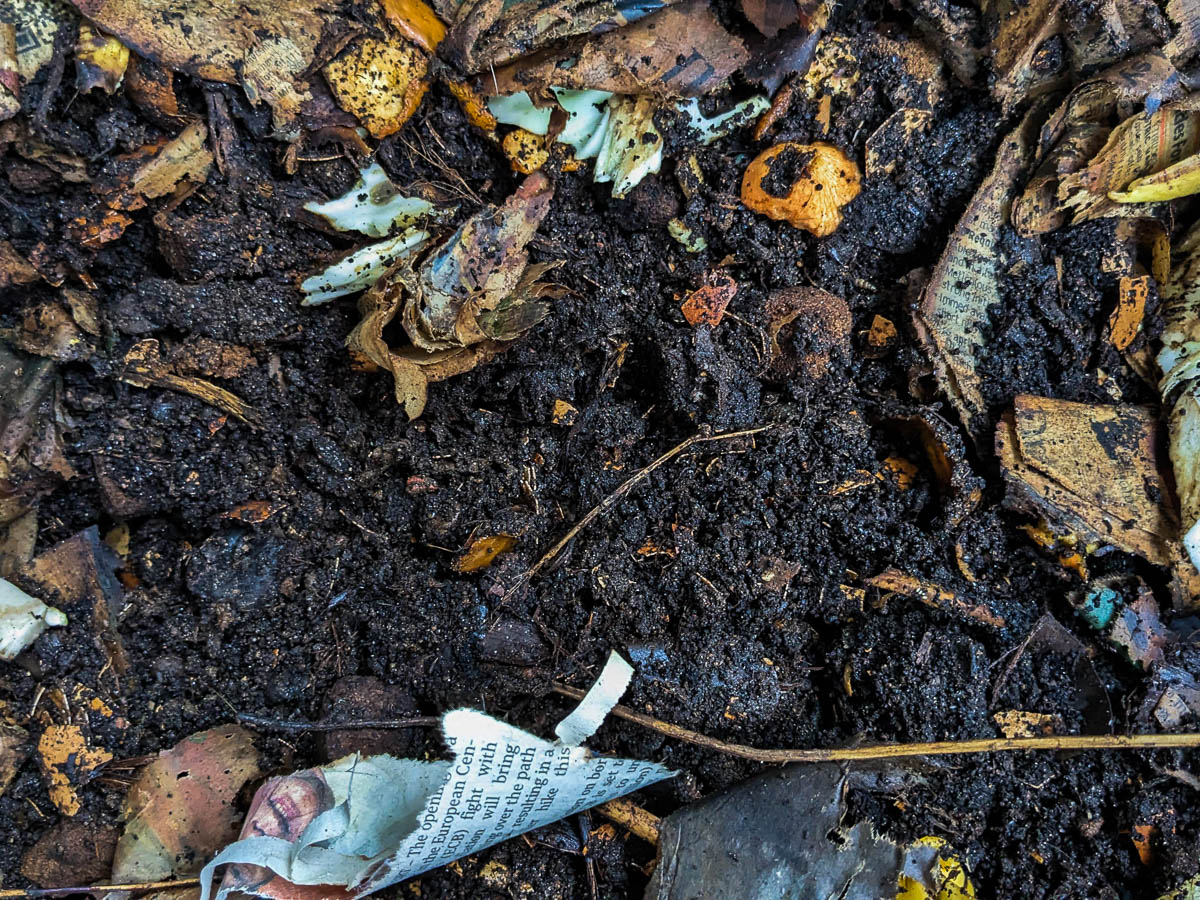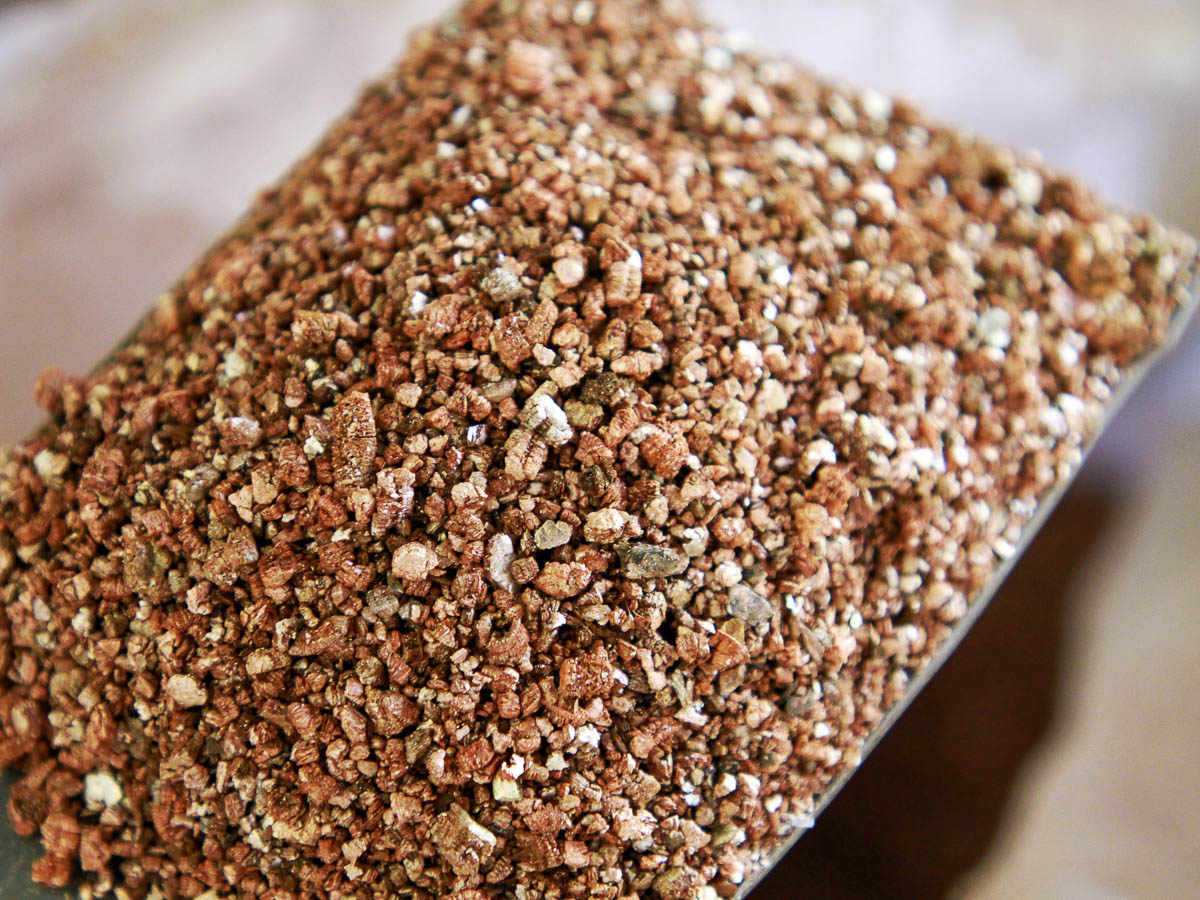Soil Amendments
Soil amendments are materials that change the properties of soil when mixed in. Soil amendments are not the same as fertilisers, which are materials that release nutrients for plant growth.
They are largely split into organic and inorganic amendments, with some common types listed below:
Organic soil amendments
Organic soil amendments are made from living things, usually other plants. They generally help to retain moisture and increase drainage in soil as the organic particles soak water up like a sponge, but after a certain point will allow whatever water they can’t absorb to drain away. This makes soil soft and moist, but not waterlogged. Organic particles will also make soil soft and airy, reducing compaction and making it easier for roots to grow. Organic soil amendments will eventually decompose and will need to be replaced. These soil amendments also feed your soil biodiversity, such as earthworms.
-

Cocopeat or coco coir is a by-product of coconut husks and looks like fine brown particles that can rapidly expand in water.
.jpg)
It is usually sold in dehydrated blocks that can expand up to 7 times their original volume when placed in water. Coco coir is much more sterile than compost and can be used for starting seeds.
-

Coco fibre is also made from coconut husks, but the material is not ground down as finely and still looks like clumps of rough hair or chips. Coco fibre can also be directly mixed in with soil, but it is much chunkier and will not mix as readily as coco coir. The large chunks will help to introduce air pockets within the soil before they decompose. Coco fibre is usually used as a lining for pots, or as a mulch.
-

Mature compost is one of the most readily available soil amendments as it can be made at home or in the garden, or bought from nurseries. Mature compost should have a soft, fine texture and smell earthy. Compost with large chunks of rotting matter that smells unpleasant is immature, and not ready for use. It is important to use mature compost that is no longer decomposing as actively rotting material in immature compost can lock up nitrogen, which will stunt plant growth.
-

Burnt rice husks are made from the husks of harvested rice, and then burnt until they are fine and powdery. They are a very light and well-draining material to mix into soil. They do however degrade rather quickly, and will need regular replacement. Poor quality burnt rice husks may have oil coating it, and will need to be washed before use.
Inorganic soil amendments
Inorganic soil amendments or grit are usually made from materials that are mined or man-made. They are generally used to increase the drainage and aeration of the soil, creating air pockets to help roots breathe. These soil amendments will not decompose and generally only need to be added once. They come in different granule sizes, with large, coarse grain sizes used for large containers and raised beds, and smaller grain sizes used for seed starting and small containers.
-
_victorialim.jpg)
Horticultural sand generally refers to river sand or coarse sand with grains larger than 2mm. It should not clump together when wet, and helps to increase the drainage and aeration of soil when mixed in. Coarser grains are generally preferred as fine sand mixed with clay soils will make a medium like concrete. It can get heavy and dense in large amounts and should generally be mixed with organic amendments like compost to make a lighter soil mix that roots can grow through.
-

Burnt earth consists of chunks of clay that has been exposed to heat, making it porous and granular. It allows for better drainage and more air to reach the roots because it maintains its crumbly texture when fresh but may revert to being wet and sticky with prolonged use. Large chunks are preferred for mixing into soil as fine grains and dust from burnt earth tends to stick together in a thick layer at the bottom of the pot. Sieve out the larger parts from the dust before use. Burnt earth can be used in the place of clay soil to make a loamy soil mix from scratch.
-

Perlite, or expanded pyrite, is a lightweight volcanic rock that is highly porous and resembles styrofoam. It is made by heating pyrite until it “pops” like popcorn. It drastically increases drainage and aeration when mixed into soil and keeps it loose. Perlite grains also have lots of crevices that can help to hold some water for plant roots to absorb, but allows excess water to drain away, thus preventing root rot. It is often used in rooting cuttings, seed-starting mixes and in container gardening. Unfortunately, because it is so light, perlite tends to float to the top in lightweight soil mixes during watering and can be blown away by the wind. It needs to be mixed back into the soil periodically. Cheaper bags of perlite might have dust, which can cause irritation when inhaled. Use gloves and a face mask when handling it for safety.
-
.jpg)
Pumice refers to a lightweight volcanic rock that is highly porous. It increases drainage and aeration when mixed into soil, and is a popular soil additive for succulent, cacti and bonsai mixes. Pumice has lots of pores that can help to hold some water for plant roots to absorb, but allows excess water to drain away, thus preventing root rot. It is often used in rooting cuttings and in container gardening
-

Vermiculite is a mineral that expands when heated, forming lightweight flakes that are highly porous. It increases drainage when mixed into soil and keeps it loose. Vermiculite flakes also absorb water like a sponge, making it a useful material to keep plants moist. It is often used in rooting cuttings, seed-starting mixes and in container gardening. Unfortunately, because it is so light, vermiculite tends to float to the top in lightweight soil mixes during watering and can be blown away by the wind. It needs to be mixed back into the soil periodically.

